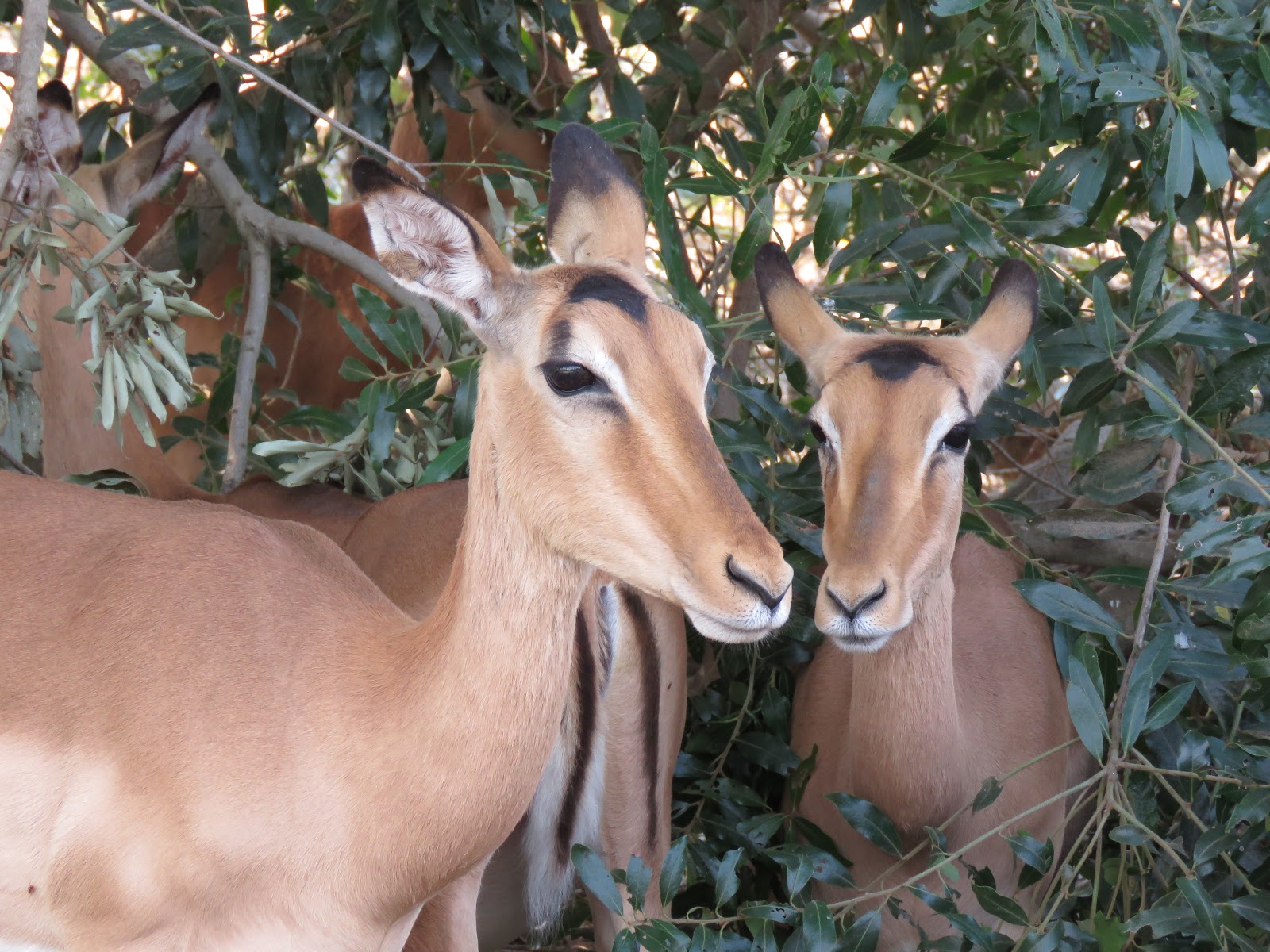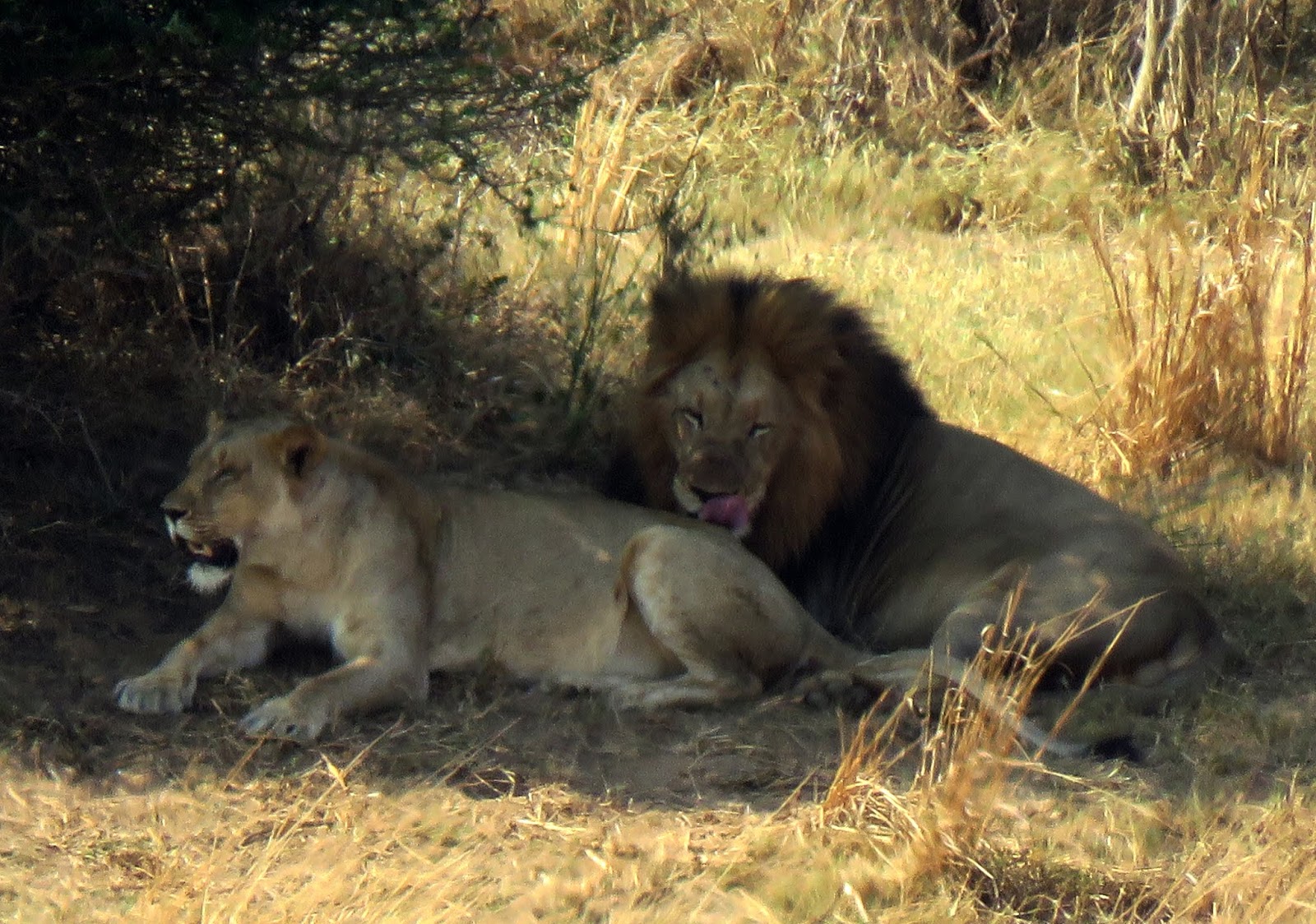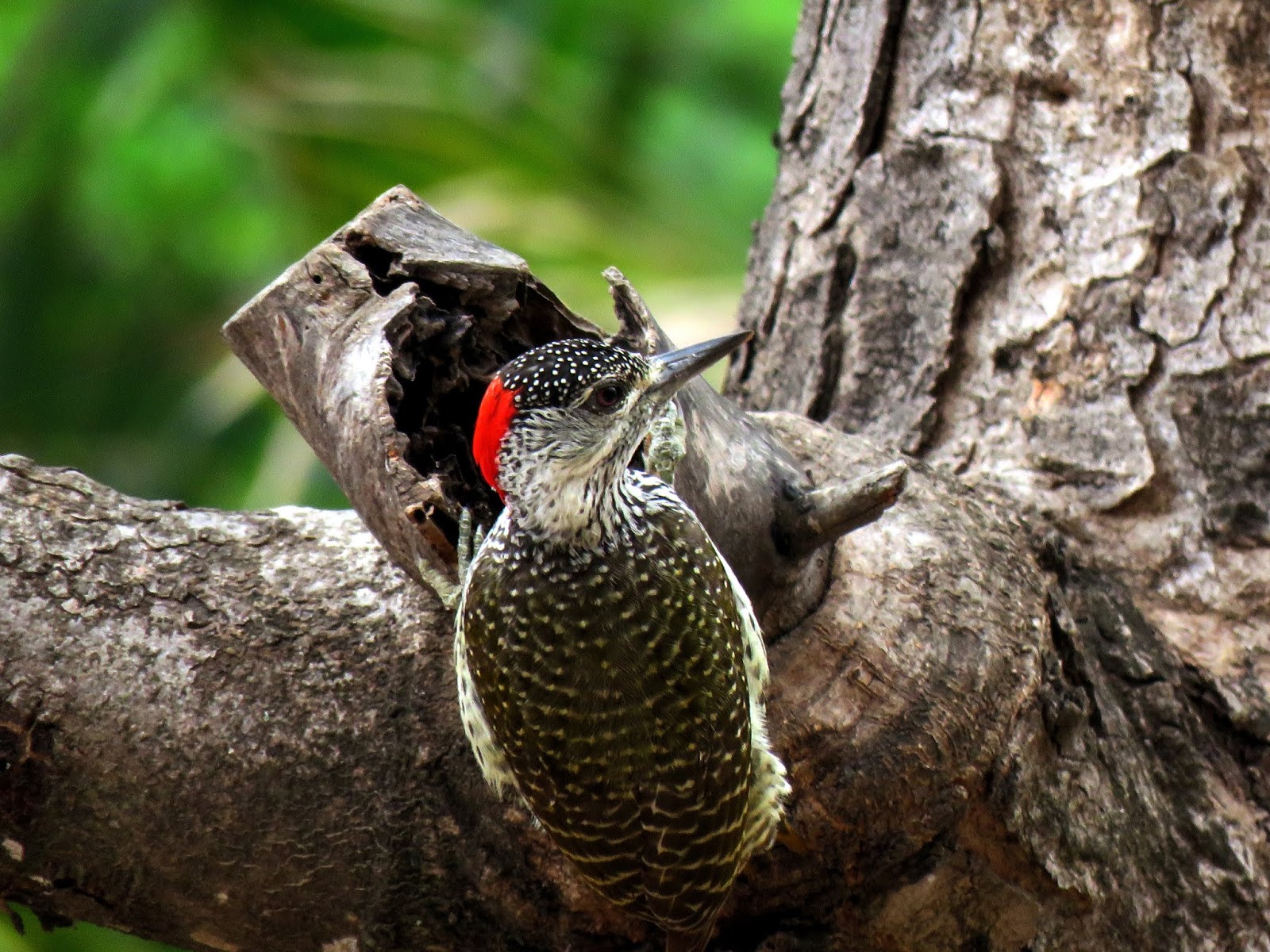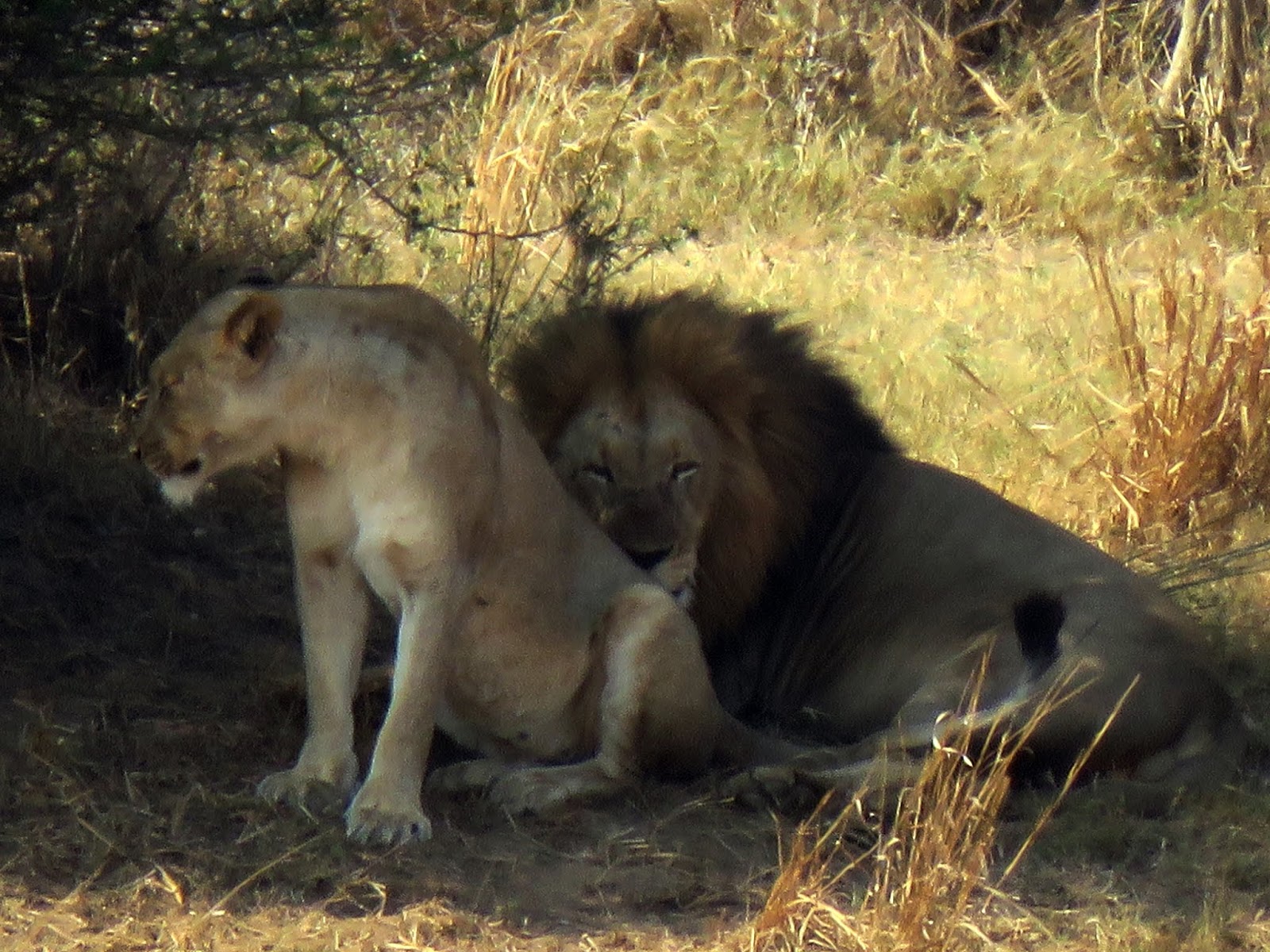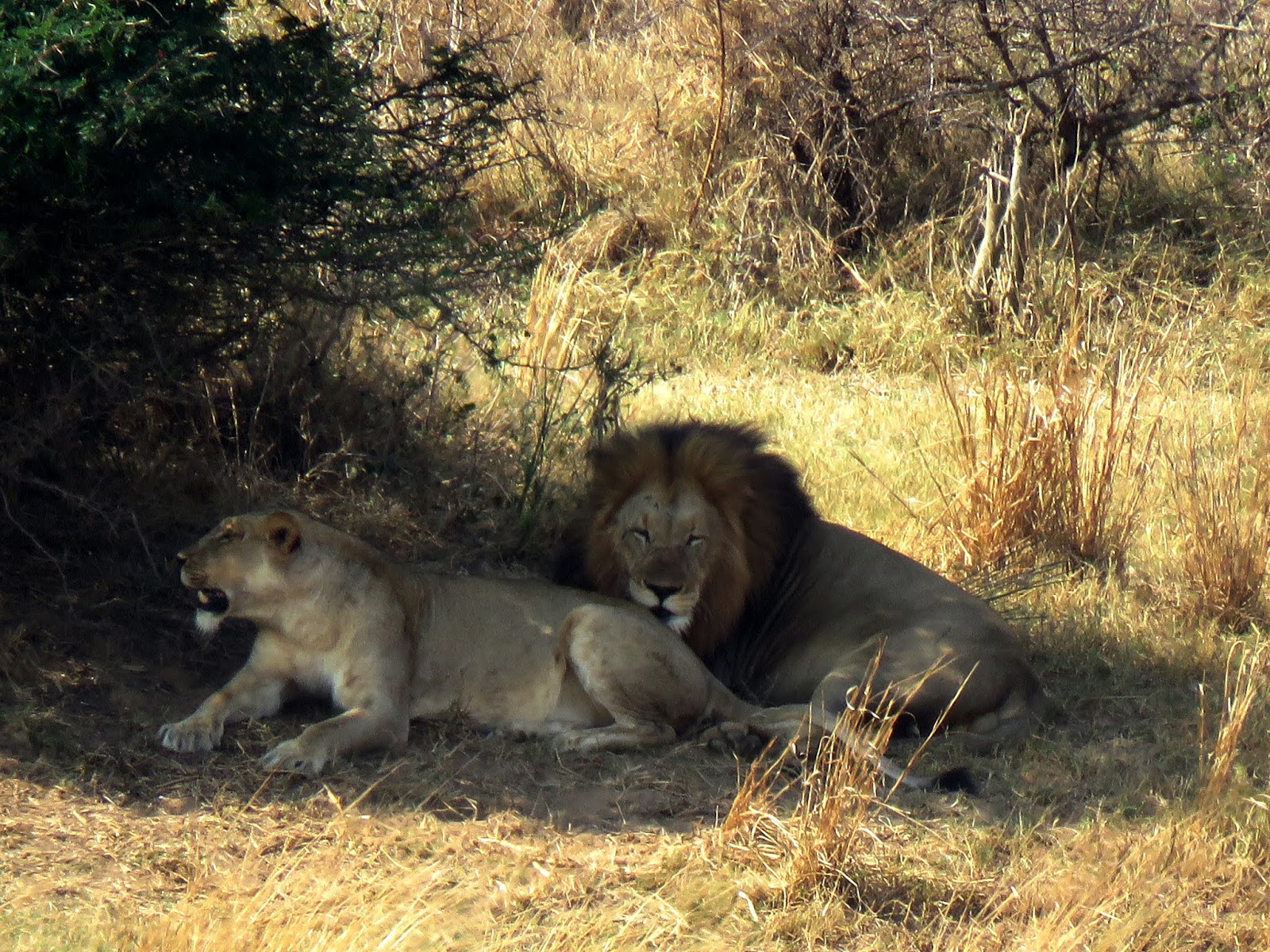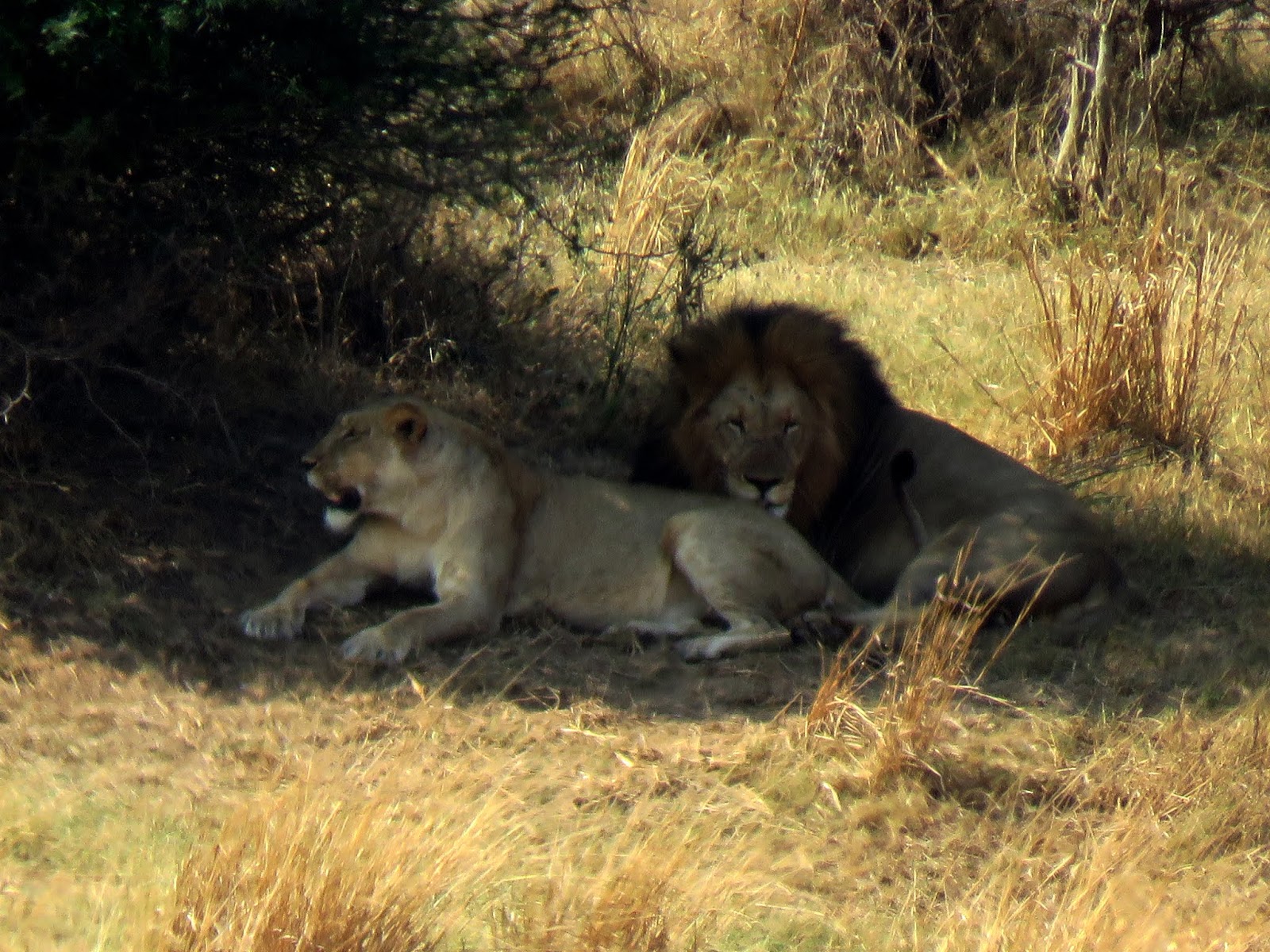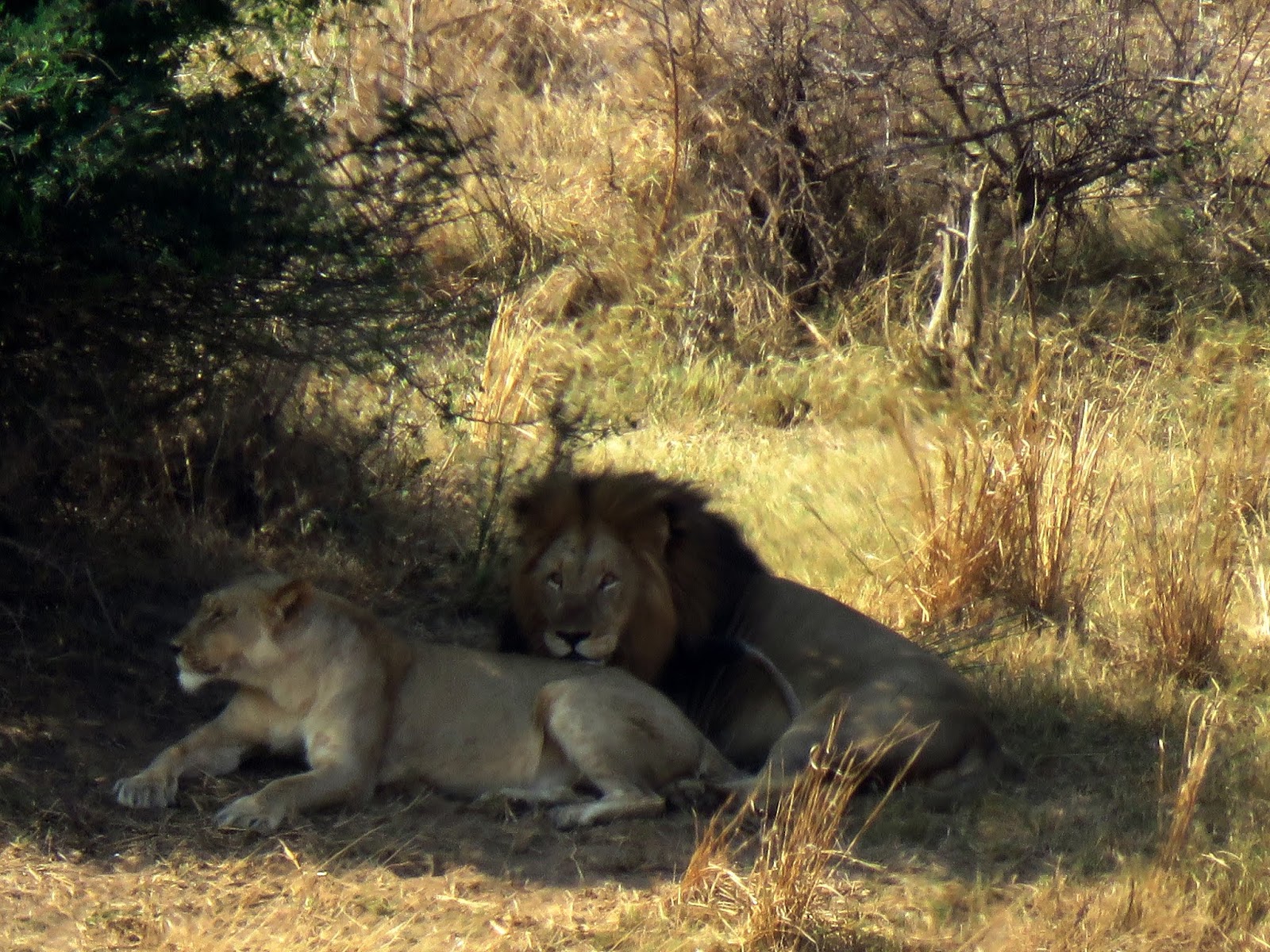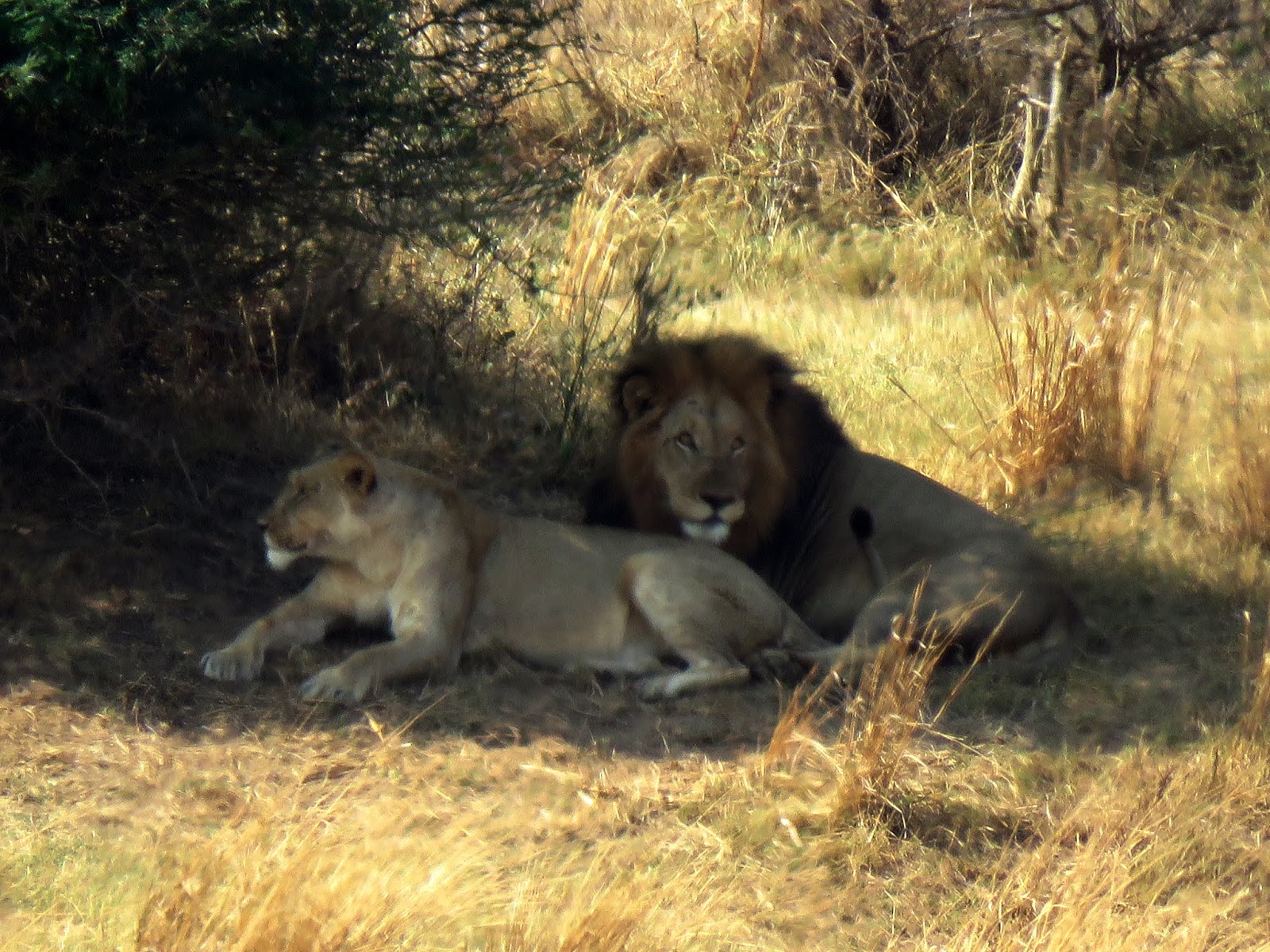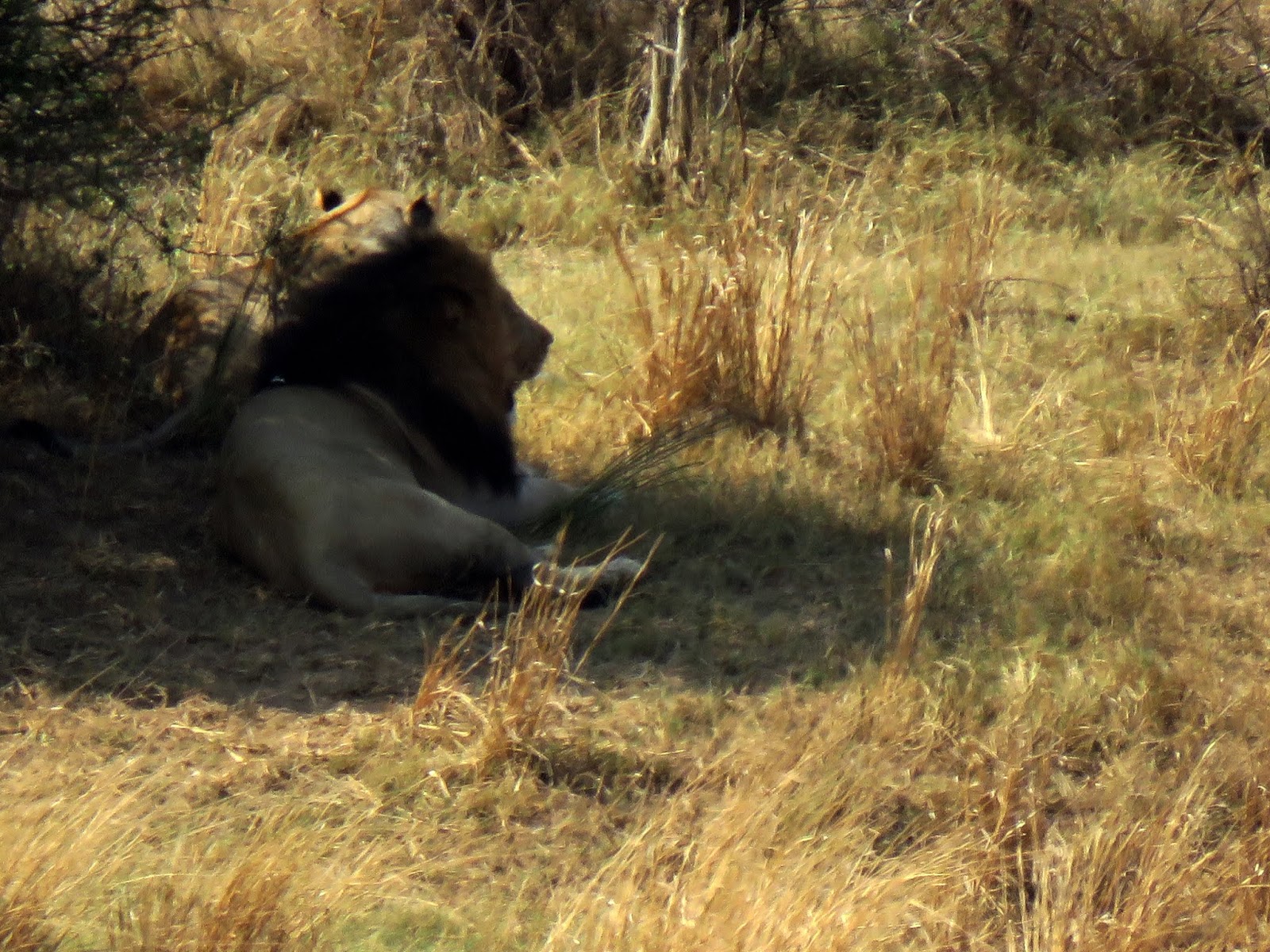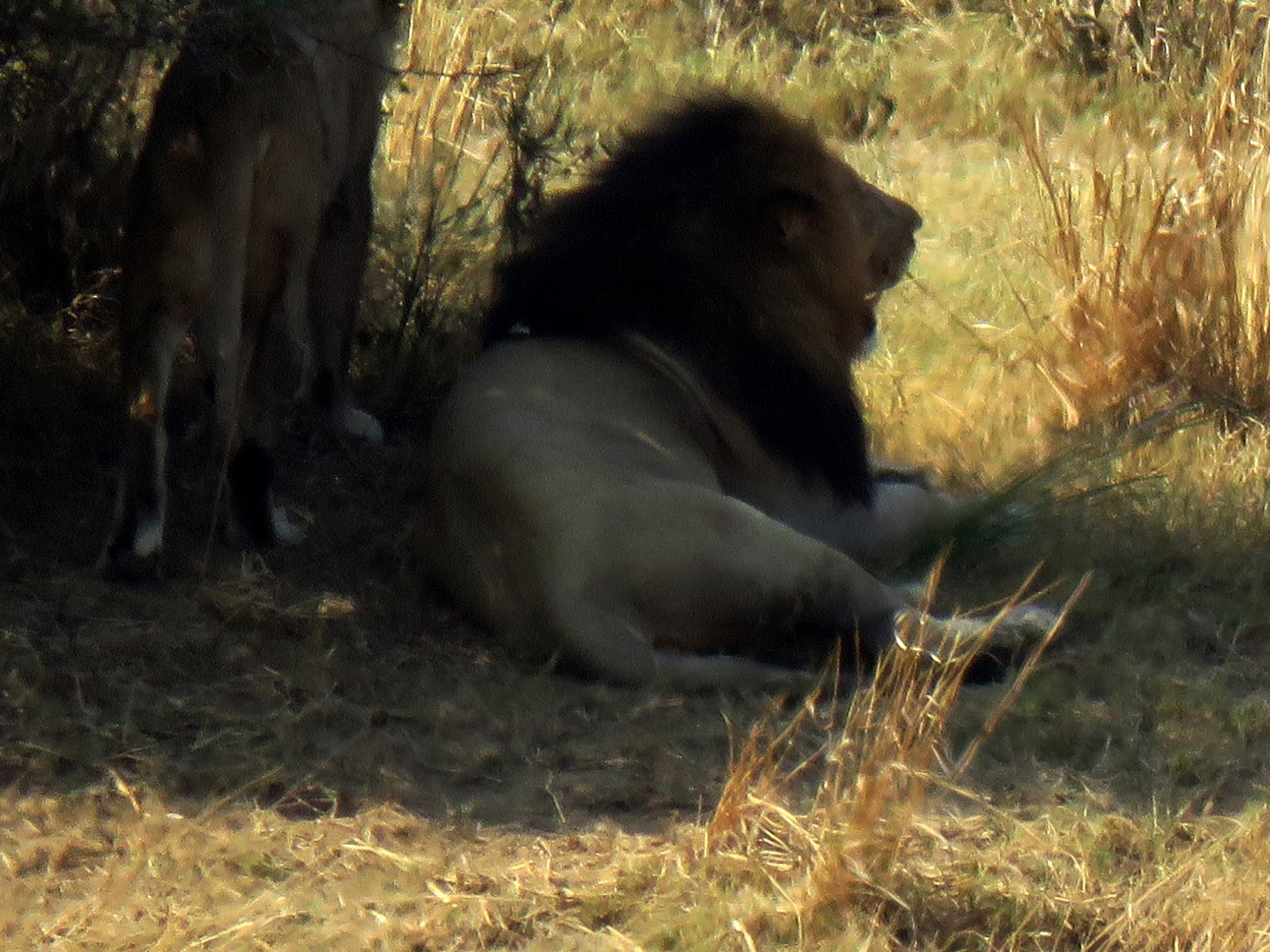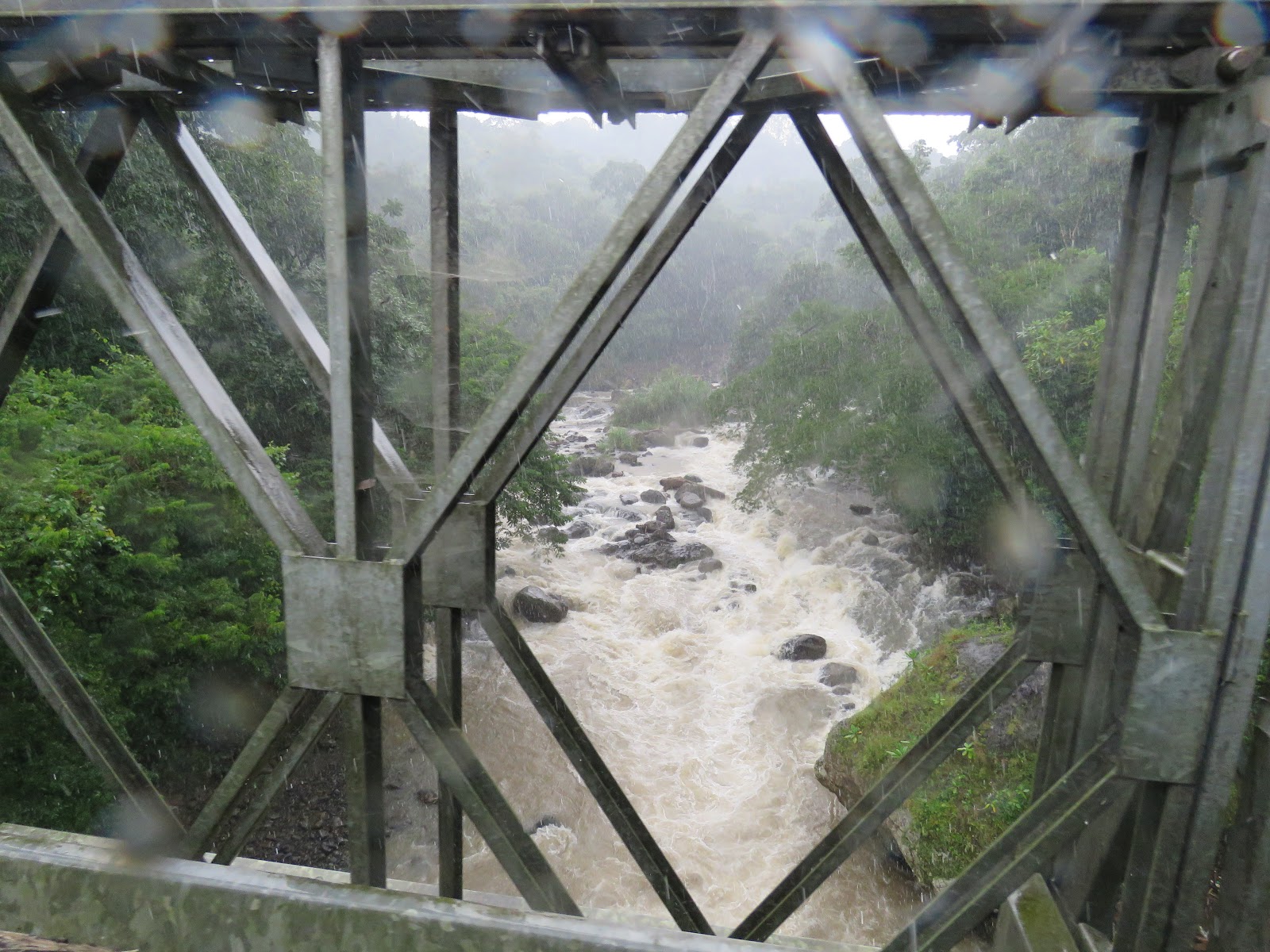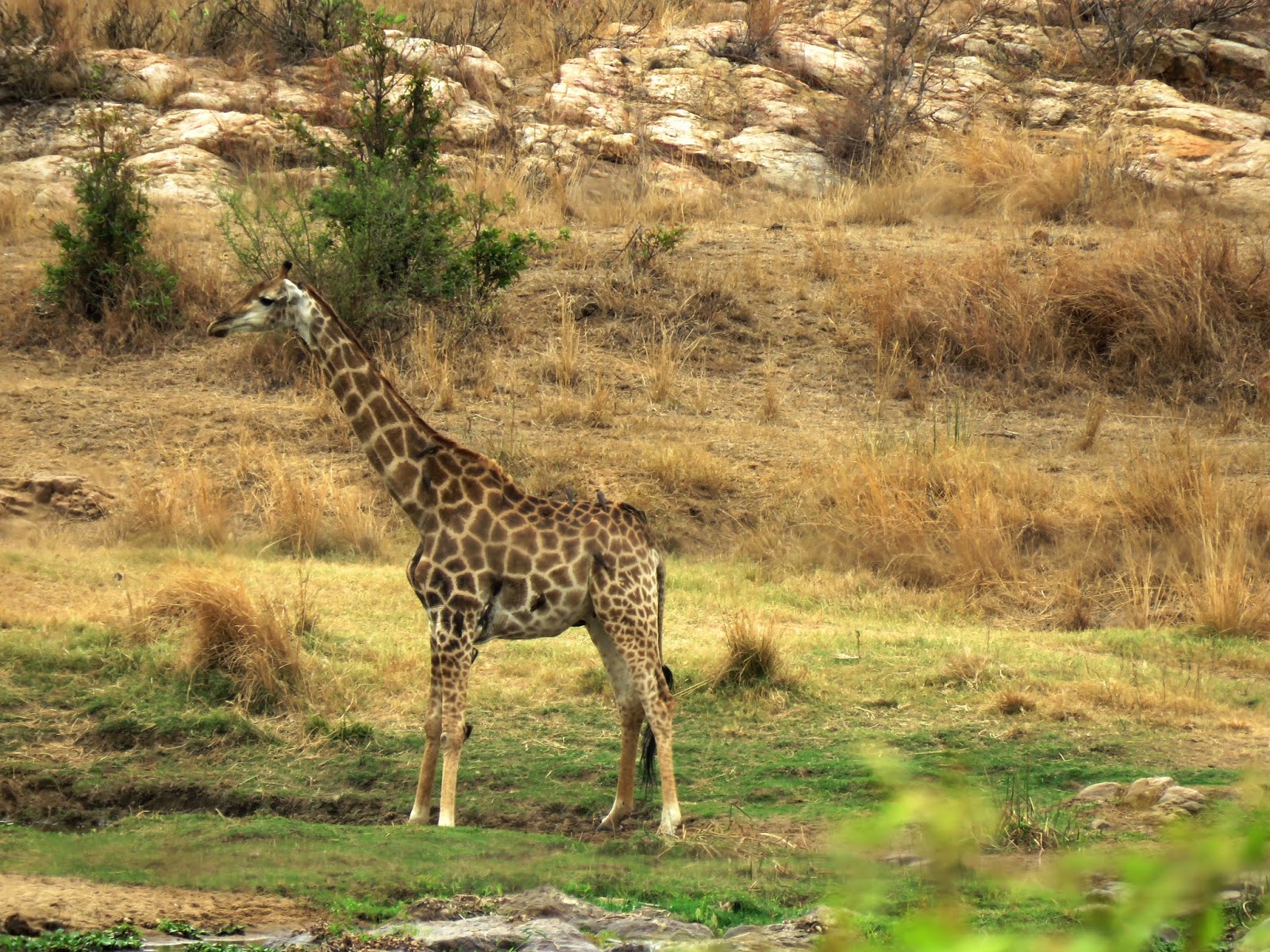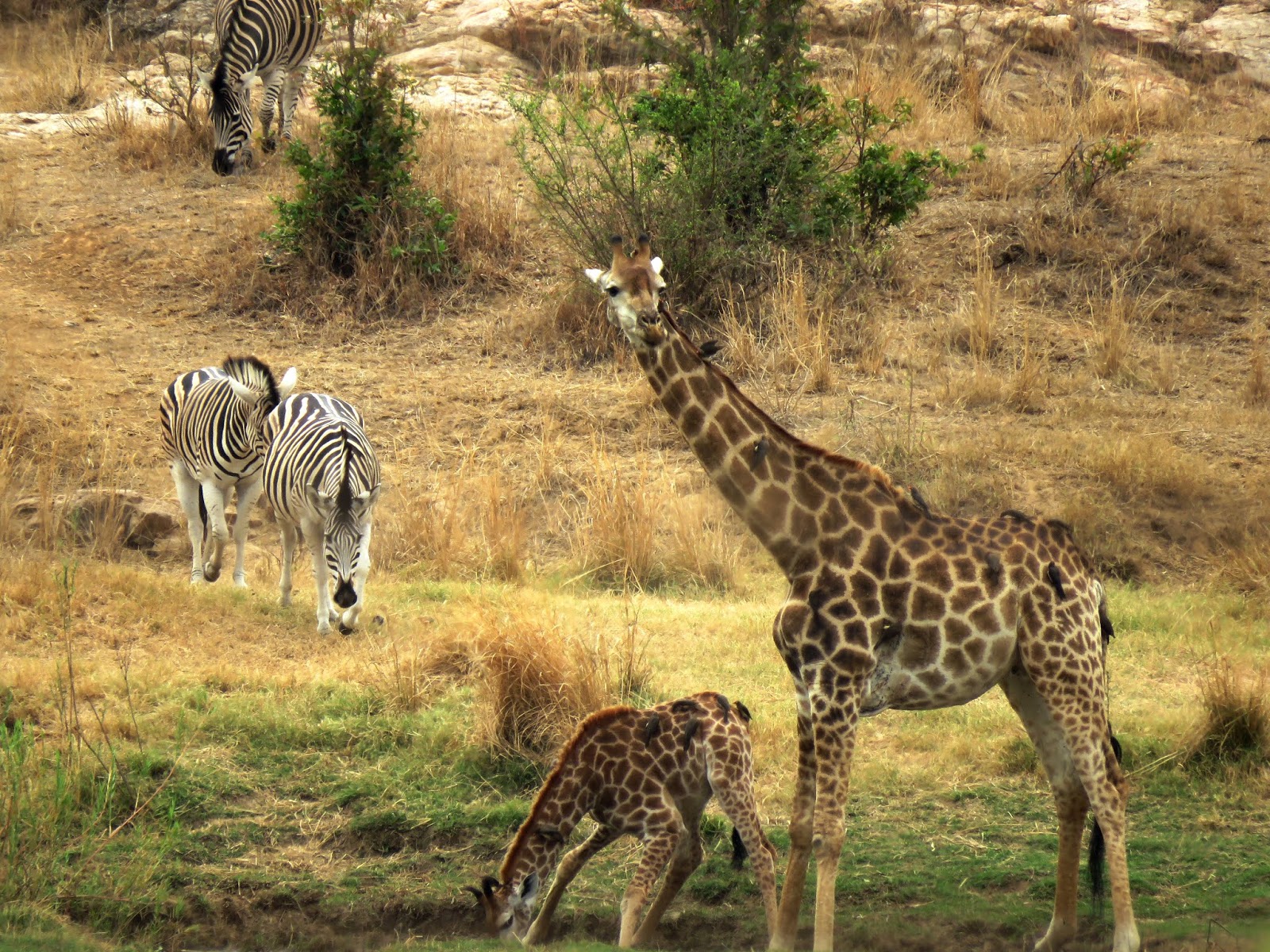 |
| An impala male who lost a horn, most likely in a fight for dominance. |
“Sighting of the Day in the Bush”
 |
| An elephant’s feet must carry a lot of weight: “Elephants are the largest living terrestrial animals. The average male African bush elephant is 3.20 m (10.5 ft) tall at the shoulder and has a body mass of 6,000 kg (13,228 lb), whereas the average female is 2.60 m (8.53 ft) tall at the shoulder and have a mass of 3,000 kg (6,614 lb).” |
Today’s post is #2254. Yes, that’s right. Wow! That’s even hard for us to believe! We’ve uploaded two thousand two hundred fifty-four posts since post #1 was uploaded on March 14, 2012 (click here for our first post).
 |
| Cape buffalos and elephants seem to get along well in the wild. |
When we recall every location we’ve visited over this past almost six years since we left Minnesota on October 31, 2012, we can easily picture ourselves sitting somewhere in a vacation/holiday home, hotel, or cruise ship, preparing each day’s story.
 |
| Cape buffalos on the Marloth Park side of the river. |
In the beginning, we didn’t include many photos. Still, once we left the US on January 3, 2013 (after a two-month stay in Scottsdale, Arizona, and Henderson, Nevada, while making the final preparations for our departure), we knew photos would become an integral aspect continuing our world journey and subsequent story.
With technology aligned to make this all possible, we knew we’d selected the right time in our lives to go on this adventure. Little did we know then how long we’d continue, and still today, we can’t predict the future…good health is the highest priority.
 |
| This crocodile hide looks different than others. Any comments? |
We started the first post, as mentioned above, in March 2012 and today, September 29, 2018. It’s 2390 days later. How is that possible? Where did the extra 136 posts come from? That adds up to an average of an additional 21 posts per year.
 |
| Big elephant cooling off in Sunset Dam in Kruger. |
In reviewing the list of the archives its easy to see that some months, some years, we uploaded extra posts when the Wi-Fi signal was weak (a common occurrence in many countries) or the power was going off and on, often long enough for us to post a notice we were having difficulties and would prepare the post once services were restored.
At other times, we posted a short blurb on travel days, unsure if we’d later be able to prepare a full post at an airport while waiting to board a flight. Often, we were able to connect.
 |
| Each giraffe’s face appears to have a unique expression. |
Less often, we had situations where we had something to share that required periodic updates, such as inclement weather, earthquakes, hurricanes, and rough days at sea.
 |
| Cape buffalos were lounging by the water on a scorching day. |
In the first year, we wrote less often. For example, in 2012, we only posted 160 stories, but in 2014, we posted 377 times. One can see the totals for each year at the archives listed on the right side of the homepage, which changes daily with each new post.
 |
| Cape buffalo grazing close to the fence in Marloth Park. |
Now you may ask, “Haven’t we run out of topics yet?” Not quite. As long as we continue to enhance our days with new sightings, new activities, new cultures, meeting new people, embarking on tours and other adventures, we can’t imagine running out of topics.
 |
| After this long dry season, this is all that’s left of the water in Vurhami Dam in Kruger. |
I’ll admit at times. Our posts are mundane and less enjoyable. Sorry about that. But, I ask myself this…if someone told us we’d have to write the equivalent of an essay every single day of our lives, sick days included, I’d say it was impossible.
 |
| Elephant family enjoying the cooling water on a hot day. |
Then, we’d have to add new photos to each post every day, always on the search for new photo ops. I’d say it was not something I could discipline myself to do. Yet, here we are today on post #2254 with nary a moment’s consideration of stopping.
 |
| Impalas in the background. |
What keeps us motivated is all of YOU, our worldwide readers who share their stories with us, who send email regularly, who inquire as to how this life may work for them, or, as in many cases, to say “thank you” for providing this ongoing story.
 |
| An impala and a giraffe under the shade of a large tree. |
But, we thank every one of you for following along with us. We never take your readership for granted and are eternally grateful for the opportunity to continue on this journey with you at our side.
May your day be as unique as you.
Photo from one year ago today, September 29, 2017:
 |
| One year ago, we posted photos of various churches we’d seen to date in our travels, including the busy preparations surrounded the Igreja De Campanario church in Campanario, Madeira, in July 2014 as workers rushed to get the decorations in place for Saturday’s religious festivities. See our link here. |



